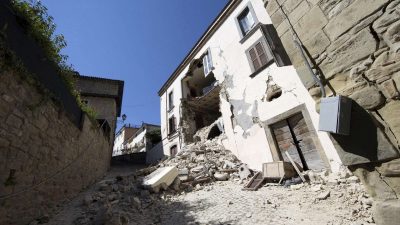Unmasking The Deadly Storm That Shattered Coastal Communities
The 1912 China Typhoon remains one of the most devastating storms to have struck the country, leaving widespread destruction in its wake. The storm, accompanied by violent winds and torrential rains, ravaged the coastal regions of China, leaving nothing but destruction and sorrow. The sheer power of this typhoon overwhelmed local defences, catching communities off guard and leaving them to deal with the aftermath. The damage wasn’t merely temporary but had long-lasting effects on both the people and the country’s infrastructure.
In its aftermath, the 1912 Typhoon became a painful reminder of the raw force of nature, underscoring the importance of better preparedness and response measures. With the destruction of entire towns and villages, this event prompted a reevaluation of China’s disaster management strategies and the need for future advancements in storm prediction and relief operations.
The Devastating Effects of the 1912 China Typhoon on Coastal Communities
The typhoon’s impact on China’s coastal regions was catastrophic, with widespread flooding and powerful storm surges sweeping across the land. These natural forces obliterated homes, agricultural lands, and critical infrastructure, bringing entire communities to their knees. The devastation caused by the storm’s winds resulted in the collapse of buildings, while the flooding destroyed farmland, leaving behind nothing but debris and displaced families.
Once the immediate chaos subsided, the country began a difficult recovery process, but it was slow and fraught with challenges. The damage to property and agriculture, along with the displacement of families, led to a massive humanitarian crisis. Many communities were left in ruins, with limited access to food and shelter. The slow recovery exposed major gaps in the nation’s disaster response systems.
The Horrific Human Cost of the 1912 China Typhoon: Unimaginable Loss
- Enormous Loss of Life: The death toll from the 1912 China Typhoon remains a topic of debate, with estimates ranging between 20,000 and over 100,000 people. This wide discrepancy in figures is due to the lack of proper documentation and the chaotic aftermath of the storm. Entire villages were swept away, and countless victims’ bodies were never recovered.
- Massive Injuries and Displacement: In addition to the fatalities, thousands were left injured, and countless others found themselves homeless. The storm decimated agricultural resources, further exacerbating the hardships faced by those who survived. Those displaced faced an uncertain future, with little support available to meet their basic needs.
- Economic Devastation: Beyond the human toll, the storm wreaked havoc on the local economy. Vital crops were destroyed, and entire farming communities were wiped out. The economic damage was widespread, leaving many families struggling to make a living and recover from the financial losses caused by the disaster.
The Ripple Effect: The 1912 China Typhoon’s Long-Term Consequences
The effects of the 1912 China Typhoon extended far beyond the immediate destruction. It exposed the weaknesses in the country’s preparedness for large-scale natural disasters. The lack of an effective early warning system and emergency response plan left coastal communities completely unprepared for the storm’s ferocity. The aftermath highlighted the urgent need for improved disaster management infrastructure to better protect vulnerable regions.
In the years that followed, the Chinese government made efforts to improve its disaster response, but the full extent of the typhoon’s damage continued to haunt the country. The typhoon not only caused widespread destruction but also led to significant political and social challenges. The event forced China to rethink its strategies for protecting its citizens from the impacts of such natural events.
Could the 1912 Typhoon Have Been Avoided? Lessons from the Past
Looking back, many wonder if there was any way the 1912 China Typhoon could have been prevented or mitigated. One major factor was the lack of early warning systems, which left communities with no time to prepare for the destructive storm. Had there been a system in place to predict the severity of the typhoon, the loss of life and damage could have been reduced significantly.
Moreover, the response from the government in the wake of the storm was inadequate. The government struggled to mobilise resources and provide timely aid, leaving many survivors to fend for themselves. The slow recovery and delayed assistance led to increased suffering and mistrust among the affected population. The disaster revealed critical flaws in China’s disaster management systems that needed to be addressed for future preparedness.
The Government’s Role in the 1912 Typhoon Disaster: Failure to Act?
The political response to the 1912 China Typhoon exposed major shortcomings in the government’s ability to handle such large-scale natural disasters. Despite the severity of the storm, there was no effective disaster response plan in place, leading to confusion and inefficiency in the relief efforts. The lack of a clear and coordinated response left many affected people without proper assistance in the aftermath of the storm.
Even as the country began to recover, the government’s efforts were seen as insufficient. While some resources were eventually allocated for reconstruction, the initial response was slow and disorganised. This failure to act decisively left a deep scar on the relationship between the government and the people, as many survivors felt abandoned in their time of need.
The 1912 Typhoon: A Wake-Up Call for China’s Disaster Management
The 1912 China Typhoon was a powerful warning to the country about the dangers of neglecting disaster preparedness. Experts argue that the storm was just the beginning of a more frequent and intense series of natural disasters. While the causes of the storm itself were natural, the devastation it caused highlighted the lack of preventive measures in place to protect vulnerable populations.
The typhoon served as a catalyst for future changes in China’s approach to disaster management. It prompted discussions about better forecasting, storm defences, and the importance of environmental conservation to protect coastal areas from future storms. This event highlighted how vulnerable China was and became a major factor in shaping the nation’s disaster response strategies in the years to come.
The Aftermath of the 1912 China Typhoon: Rebuilding and Recovery
The recovery process after the 1912 China Typhoon was an uphill battle. With entire towns and villages reduced to rubble, rebuilding efforts were slow, and many families struggled to put their lives back together. The destruction of farmland left many with nothing to rebuild upon, and it took years for some regions to recover fully. The government, though eventually mobilised, could not meet the overwhelming demands of the survivors.
While some areas were able to rebuild, the psychological and emotional toll of the disaster remained long after the physical damage was repaired. The lessons learned from this tragedy spurred China to improve its disaster response in the future, but for many survivors, the scars of the 1912 typhoon would never fully heal.
Conclusion: Reflecting on the 1912 China Typhoon and Its Consequences
The 1912 China Typhoon was a devastating event that changed the course of history for the country. Looking back, it’s clear that more could have been done to prepare for and mitigate the disaster. The lack of early warning systems, delayed government response, and inadequate infrastructure all contributed to the tragedy’s scale. This event serves as a painful reminder of the importance of disaster preparedness and the need for improved management systems in the face of nature’s overwhelming power.
While the 1912 typhoon brought about some changes in China’s approach to disaster management, it also underscored the vulnerability of coastal regions to extreme weather events. Had China acted more swiftly and decisively, perhaps the devastation could have been lessened. Nonetheless, the lessons learned from this catastrophe continue to shape the nation’s disaster preparedness strategies.
FAQs
- How many people died in the 1912 China Typhoon?
It’s estimated that between 20,000 and over 100,000 people lost their lives due to the storm, though the exact number remains uncertain due to poor record-keeping. - What was the cause of the massive destruction in the 1912 China Typhoon?
The typhoon brought destructive winds, heavy rains, and storm surges that flooded coastal areas, leading to widespread damage to homes and infrastructure. - Was China prepared for the 1912 China Typhoon?
No, China lacked an effective early warning system, and the government was slow to respond, which exacerbated the disaster’s impact. - How did the 1912 China Typhoon affect China’s economy?
The typhoon destroyed vital agricultural land and caused widespread disruption to trade, plunging the affected regions into economic turmoil. - Has China improved its disaster management since the 1912 Typhoon?
Yes, China has made significant strides in improving its disaster response, including better early warning systems, infrastructure, and preparedness protocols.
References:
1912 China Typhoon
Zhejiang Flood, 1912
Cataclysm in China
A Chinese Typhoon”




